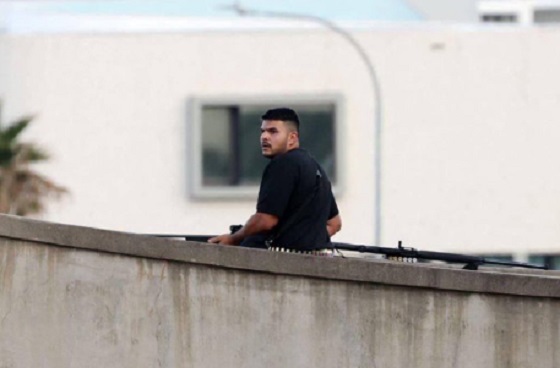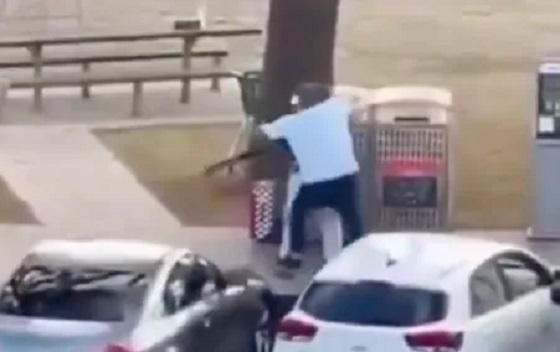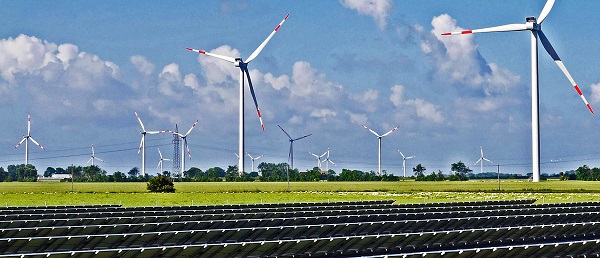National
Crowning the Captain of a Sinking Ship: Who Will Be the Next Liberal Leader?

The Fight to Lead a Party on the Brink of Irrelevance
It’s December 31st, New Year’s Eve, and as we wrap up this catastrophic year, let’s take a moment to reflect on the political dumpster fire we find ourselves in. I hope you’ve got a stiff drink because the election year ahead is shaping up to be a circus. And at the center of the big top? Justin Trudeau, clinging to power like a toddler to his binky, while whispers of resignation swirl around him. But let’s be honest—do we actually think he has the guts to step down? Not a chance.
Let’s get this straight: if Trudeau does bail, he’s leaving a flaming wreckage for someone else to clean up. That’s his legacy—eight years of virtue-signaling, fiscal recklessness, and divisive identity politics, all culminating in a Liberal Party that’s circling the drain. And now, when the going gets tough, the golden boy might just pack it in? How noble. But really, would it surprise anyone? The man has all the grit of a soggy croissant.
So who’s going to take the reins of this sinking ship? Let’s take a look at the cast of characters who might have the stomach—or lack of self-awareness—to step up.
Mark Carney: The Globalist Banker
Alright, Canada, let’s get serious for a moment and talk about the Liberals’ latest pipe dream: Mark Carney as their next leader. Yes, Mark Carney—the globalist banker who’s spent more time cozying up to billionaires at Davos than he has walking the streets of Moose Jaw. If this is the Liberals’ idea of a “fresh start,” then we’re in for even more of the same elitist nonsense that’s driven this country into the ground.
Who is Mark Carney, really? He’s not a leader. He’s a technocrat, a former central banker whose claim to fame is lecturing the world on fiscal responsibility while ignoring the very real struggles of ordinary people. He’s the poster boy for the World Economic Forum’s brand of top-down control, someone who believes in “stakeholder capitalism”—which is just code for bureaucrats and corporations running your life. And yet, somehow, the Liberals think this guy is the one to rebuild their tarnished reputation? Give me a break.
Carney’s entire career has been about serving the global elite. He’s a Goldman Sachs alum, for crying out loud. Do you honestly believe someone with that pedigree is going to step into the ring and start fighting for the working class? Of course not. He’ll push the same disastrous policies that have gutted the middle class—more taxes, more spending, more “green” initiatives that make heating your home a luxury.
And let’s not forget the optics. This is a man who’s spent years flying around the globe, hobnobbing with world leaders and lecturing them on climate policy. Does he even know what Canadians are going through right now? Has he ever set foot in a grocery store and winced at the price of a loaf of bread? My guess is no. But sure, Liberals, tell us how this guy is going to connect with voters in rural Saskatchewan or Northern Ontario. The man probably thinks “double-double” is a stock market term.
Then there’s the political reality. If Carney goes head-to-head with Pierre Poilievre, it’s not going to be a contest—it’s going to be a massacre. Poilievre has spent years sharpening his message, hammering home the Liberals’ failures, and building a grassroots movement. Mark Carney? He’s the kind of guy who speaks in 15-minute monologues filled with jargon nobody understands. It’s not just that he’s out of touch—it’s that he doesn’t even know what being in touch looks like.
This isn’t leadership. It’s desperation. The Liberals are throwing Carney into the mix because they have no other options, no fresh ideas, and no connection to the struggles of everyday Canadians. He’s not the answer; he’s a symptom of the problem. The party that brought you eight years of Justin Trudeau now wants to hand the reins to a man who’s even more disconnected, more elitist, and more out of step with what this country actually needs.
Mark Carney as Liberal leader? Please. If this is their plan, then the Liberals have already lost, and Canada will be better off for it. Good riddance.
Dominic LeBlanc: Trudeau’s Loyal Lapdog and the Wrong Choice for Liberal Leadership
Dominic LeBlanc, the latest name being floated as a potential Liberal leader. If the Liberals think this guy is the answer to their problems, then they clearly haven’t been paying attention to what Canadians actually want. Let’s not sugarcoat this: Dominic LeBlanc is Trudeau’s loyal lapdog, and putting him at the helm of the Liberal Party would be the equivalent of putting fresh paint on a sinking ship.
LeBlanc’s biggest problem is that he’s not a leader—he’s a career politician who thrives on backroom deals and political patronage. He’s spent years in Trudeau’s inner circle, defending every mistake, every scandal, and every bad policy. Canadians are fed up with the cronyism that defines this government, and LeBlanc embodies it. The man’s entire career has been about staying in Trudeau’s shadow, not standing on his own.
Now, let’s talk about his record. What exactly has Dominic LeBlanc accomplished that qualifies him to lead a country? Sure, he’s held high-profile positions—Minister of Intergovernmental Affairs, Minister of Fisheries—but those are titles, not achievements. His time in government has been marked by mediocrity, not bold action. When Canadians are looking for real solutions to real problems, LeBlanc offers nothing but recycled talking points and stale ideas.
Then there’s the optics. LeBlanc has been so closely tied to Trudeau’s Liberal machine that he can’t credibly distance himself from the failures of this government. He’s part of the same crew that gave us the carbon tax, the skyrocketing cost of living, and endless virtue-signaling while ordinary Canadians struggle to make ends meet. Does anyone seriously believe Dominic LeBlanc is going to suddenly chart a new course? Of course not.
And let’s not forget his style—or lack thereof. LeBlanc might be affable, even charming, but Canadians don’t need a nice guy right now. They need someone who can go toe-to-toe with Pierre Poilievre, who can articulate a vision and fight for it. LeBlanc’s affability won’t cut it in the bare-knuckle world of federal politics. He’s a backroom operator, not a front-line fighter, and that’s exactly why he’ll fail.
The truth is, Dominic LeBlanc is just more of the same. He represents the same tired Liberal brand that Canadians are desperate to move on from. If the Liberals think he’s the man to save their party, they’re not just wrong—they’re delusional.
Mélanie Joly: The Walking Diplomatic Disaster
Let’s move on to Mélanie Joly, our current Foreign Affairs Minister. The idea of Joly leading the Liberal Party is about as absurd as her recent diplomatic escapades. Competence? Let’s just say her track record doesn’t inspire confidence.
Take her visit to China—a masterclass in accomplishing absolutely nothing. Instead of tackling real issues like strained relations or economic disputes, she delivered a lecture on global security, a topic where Canada’s influence is as impactful as a paper straw in a hurricane. Critics have called her approach “parochial arrogance,” and it’s hard to disagree.
Her stance on Israel is equally troubling. At a time when Canada’s allies need consistent support, Joly’s vacillating positions have left us looking like fair-weather friends. Leadership demands decisiveness, and Joly has shown none.
Perhaps most telling, though, was her behavior during a press conference about the killing of Ripudaman Singh Malik. Laughing during such a serious moment? That’s not just unprofessional—it’s downright embarrassing.
François-Philippe Champagne: The Opportunist Extraordinaire
Next up, François-Philippe Champagne, the Minister of Innovation. If you thought we couldn’t do worse, Champagne is here to prove you wrong.
Let’s start with his judgment—or lack thereof. Champagne defended the leadership of a federal green fund under his watch despite allegations of corruption, including a $217,000 subsidy granted to the chair’s own company. When pressed, he claimed there wasn’t enough “evidence” to take action, even as the Auditor General launched a review. That’s not oversight—it’s negligence.
Then there’s his economic vision—or lack thereof. Champagne is the face of the government’s $100 billion electric vehicle strategy, a plan that critics say is wildly ambitious and hopelessly vague. Champagne, of course, blamed critics for “lacking vision and ambition.” Classic deflection.
And let’s not forget his political opportunism. Speculation about his potential run for Quebec’s Liberal Party leadership showed exactly where his priorities lie: not with Canadians, but with his own career.
Champagne represents everything Canadians are fed up with—self-serving politicians who deflect criticism and prioritize optics over outcomes.
Chrystia Freeland: Trudeau’s Economic Doppelgänger
Finally, we come to Chrystia Freeland, the former Finance Minister and Trudeau’s right hand. If you thought the Liberals couldn’t dig deeper into their fiscal hole, Freeland is here to prove you wrong.
Freeland has been at the helm of Trudeau’s disastrous economic policies, including ballooning deficits and a national debt that now makes Greece look frugal. Her resignation letter criticized Trudeau’s strategies as “costly political gimmicks,” but let’s be real—she helped craft those gimmicks. Canadians want fiscal responsibility, not a continuation of Trudeau’s tax-and-spend circus.
On top of her economic failures, Freeland’s personality is a problem. Arrogant, unlikable, and out of touch, she’s more interested in impressing global elites than connecting with everyday Canadians. Her academic pedigree might dazzle the Davos crowd, but here at home, it reeks of elitism.
Freeland isn’t a solution to the Liberals’ problems—she’s the embodiment of them.
Christy Clark: meh…
Alright, let’s get into it, folks. Christy Clark as the potential savior of the Liberal Party—now there’s a plot twist that could almost be entertaining, if it weren’t so doomed from the start. On paper, she might seem like the only grown-up in the room, but let’s not kid ourselves: the Liberal Party is so far gone, even Houdini couldn’t rescue them, and Christy Clark is no Houdini.
First off, let’s be clear about why she’s the better option. Compared to the usual lineup of Trudeau loyalists and globalist placeholders, Clark actually knows how to run something. She was the Premier of British Columbia, and say what you will about her record—because trust me, we’ll get to that—she has actual executive experience. She’s been out of the federal Liberal swamp long enough that the Trudeau stink doesn’t cling to her quite as badly. That’s about the only thing she has going for her: she’s not Dominic LeBlanc or Mark Carney. High bar, I know.
But here’s the thing: being the best option in a lineup of disasters isn’t exactly a glowing endorsement. Sure, Christy Clark is seasoned, but let’s not forget her own record in British Columbia. Yes, she balanced budgets, but she did so by relying on one-time asset sales and riding the wave of a hot real estate market. That’s not fiscal wizardry—it’s just lucky timing. And let’s not gloss over the accusations of cronyism and catering to corporate interests that plagued her government. Sound familiar? It’s Trudeau-lite with a West Coast twist.
And here’s the real kicker: even if Clark were a political genius (spoiler: she’s not), the Liberal brand is so tainted that it wouldn’t matter. Eight years of Justin Trudeau have left Canadians disillusioned, angry, and desperate for change. The scandals, the carbon taxes, the virtue-signaling—it’s all become synonymous with the Liberal Party. Clark can try to distance herself all she wants, but at the end of the day, she’s still carrying the baggage of a party Canadians are ready to toss in the trash.
Let’s also not forget that Clark isn’t exactly the fresh face the Liberals need. She’s a seasoned politician, sure, but that’s part of the problem. After Trudeau’s reign of elitist arrogance, Canadians aren’t looking for another career politician who’s part of the same broken system. Clark might be different from Trudeau, but she’s not different enough.
And then there’s the elephant in the room: Pierre Poilievre. Poilievre has built his brand on taking down exactly the kind of big-government, tax-happy policies that Clark has championed in the past. She might be able to hold her own in debates, but against Poilievre’s laser-focused messaging and grassroots momentum, Clark would get steamrolled.
The bottom line? Christy Clark might be the least-worst option for the Liberals, but that’s not saying much. Her record is spotty, her appeal is limited, and she’s tied to a party that’s become a political punchline. The Liberals can try to rebrand all they want, but with Clark at the helm, they’re just rearranging the deck chairs on the Titanic.
Final Thoughts
Alright, Canada, let’s wrap this up because, honestly, there’s only so much you can say about a sinking ship. The Liberal Party is done. Finished. Kaput. The Angus Reid poll has spoken—16% support. Sixteen percent! That’s not just a bad showing; that’s the kind of number you’d expect from a fringe party running on mandatory pineapple pizza. The Liberals aren’t just losing—they’re disintegrating in real-time, and frankly, it’s been a long time coming.
Justin Trudeau, the captain of this catastrophe, is standing on the deck of the SS Liberal, looking for a lifeboat as the iceberg rips through the hull. His approval rating is at a laughable 28%, his party is in open revolt, and his so-called successors are all lined up like passengers fighting over the last spot on the Titanic. Chrystia Freeland? Jumped ship. Mark Carney? A banker trying to steer a political dumpster fire. Dominic LeBlanc? Trudeau’s yes-man without an ounce of originality.
Let’s be clear—this isn’t a leadership race; it’s a race to see who gets to be the face of a historic collapse. The Liberal brand is so tainted, so toxic, that no amount of rebranding or fresh faces is going to fix it. Canadians are done. They’re fed up with the taxes, the spending, the hypocrisy, and the endless lecturing from a party that’s done nothing but drive this country into the ground.
And you know what? Thank God. Thank God we’re finally closing this ugly chapter of Canadian history. The SS Liberal Party is going down, and no amount of spin can save it. Here’s to 2025—a fresh start, a new chapter, and hopefully, the end of Trudeau and everything he stands for.
Subscribe to The Opposition with Dan Knight .
For the full experience, upgrade your subscription.
Energy
Liberals Twisted Themselves Into Pretzels Over Their Own Pipeline MOU

From Energy Now
By Margareta Dovgal
Playing politics with pipelines is a time-honored Canadian tradition. Recent events in the House of Commons offered a delightful twist on the genre.
The Conservatives introduced a motion quoting the Liberals’ own pipeline promises laid out in the Memorandum of Understanding (MOU) with Alberta, nearly verbatim. The Liberals, true to form, killed it 196–139 with enthusiastic help from the NDP, Bloc, and Greens.
We all knew how this would end. Opposition motions like this never pass; no government, especially not one led by Mark Carney, is going to let the opposition dictate the agenda. There’s not much use feigning outrage that the Liberals voted it down. The more entertaining angle has been watching closely as Liberal MPs twist themselves into pretzels explaining why they had to vote “no” on a motion that cheers on a project they claim to support in principle.
Liberal MP Corey Hogan dismissed the motion as “game-playing” designed to “poke at people”.
And he’s absolutely right to call it a “trap” for the Liberals. But traps only work when you walk into them.
Indigenous Services Minister Mandy Gull-Masty deemed the motion an “immature waste of parliamentary time” and “clearly an insult towards Indigenous Peoples” because it didn’t include every clause of the original agreement. Energy Minister Tim Hodgson decried it as a “cynical ploy to divide us” that “cherry-picked” the MOU.
Yet the prize for the most tortured metaphor goes to the prime minister himself. Defending his vote against his own pipeline promise, Carney lectured the House that “you have to eat the entire meal, not just the appetizer.”
It’s a clever line, and it also reveals the problem. The “meal” Carney is serving is stuffed with conditions. Environmental targets or meaningful engagement with Indigenous communities aren’t unrealistic asks. A crippling industrial carbon price as a precondition might be though.
But the prime minister has already said the quiet part out loud.
Speaking in the House a few weeks ago, Carney admitted that the agreement creates “necessary conditions, but not sufficient conditions,” before explicitly stating: “We believe the government of British Columbia has to agree.”
There is the poison pill. Handing a de facto veto to a provincial government that has spent years fighting oil infrastructure is neither constitutionally required nor politically likely. Elevating B.C.’s “agreement” to a condition, which is something the MOU text itself carefully avoids doing, means that Carney has made his own “meal” effectively inedible.
Hodgson’s repeated emphasis that the Liberal caucus supports “the entire MOU, the entire MOU” only reinforces this theory.
This entire episode forces us to ask whether the MOU is a real plan to build a pipeline, or just a national unity play designed to cool down the separatist temperature in Alberta. My sense is that Ottawa knew they had to throw a bone to Premier Danielle Smith because the threat of the sovereignty movement is gaining real traction. But you can’t just create the pretense of negotiation to buy time.
With the MOU getting Smith boo’ed at her own party’s convention by the separatists, it’s debatable whether that bone was even an effective one to throw.
There is a way. The federal government has the jurisdiction. If they really wanted to, they could just do it, provided the duty to consult with and accommodate Indigenous peoples was satisfied. Keep in mind: no reasonable interpretation equates Section 35 of the Charter to a veto.
Instead, the MOU is baked with so many conditions that the Liberals have effectively laid the groundwork for how they’re going to fail.
With overly-hedged, rather cryptic messaging, Liberals have themselves given considerable weight to a cynical theory, that the MOU is a stalling tactic, not a foundation to get more Canadian oil to the markets it’s needed in. Maybe Hodgson is telling the truth, and caucus is unified because the radicals are satisfied that “the entire MOU” ensures that a new oil pipeline will never reach tidewater through BC.
So, hats off to the legislative affairs strategists in the Conservative caucus. The real test of Carney’s political power continues: can he force a caucus that prefers fantasy economics into a mold of economic literacy to deliver on the vision Canadians signed off on? Or will he be hamstrung trying to appease the radicals from within?
Margareta Dovgal is managing director of Resource Works Society.
Business
Ottawa Pretends To Pivot But Keeps Spending Like Trudeau
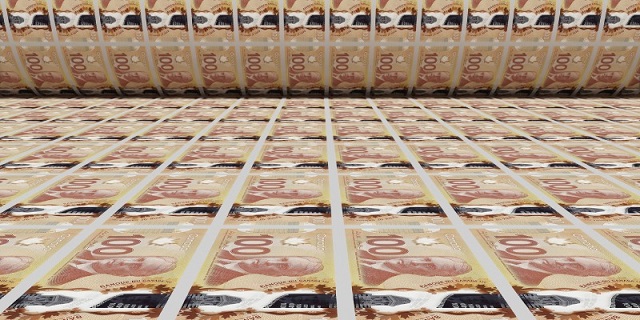
From the Frontier Centre for Public Policy
New script, same budget playbook. Nothing in the Carney budget breaks from the Trudeau years
Prime Minister Mark Carney’s first budget talks reform but delivers the same failed spending habits that defined the Trudeau years.
While speaking in the language of productivity, infrastructure and capital formation, the diction of grown-up economics, it still follows the same spending path that has driven federal budgets for years. The message sounds new, but the behaviour is unchanged.
Time will tell, to be fair, but it feels like more rhetoric, and we have seen this rhetoric lead to nothing before.
The government insists it has found a new path, one where public investment leads private growth. That sounds bold. However, it is more a rebranding than a reform. It is a shift in vocabulary, not in discipline. The government’s assumptions demand trust, not proof, and the budget offers little of the latter.
Former prime ministers Jean Chrétien and Paul Martin did not flirt with restraint; they executed it. Their budget cuts were deep, restored credibility, and revived Canada’s fiscal health when it was most needed. Ottawa shrank so the country could grow. Budget 2025 tries to invoke their spirit but not their actions. The contrast shows how far this budget falls short of real reform.
Former prime minister Stephen Harper, by contrast, treated balanced budgets as policy and principle. Even during the global financial crisis, his government used stimulus as a bridge, not a way of life. It cut taxes widely and consistently, limited public service growth and placed the long-term burden on restraint rather than rhetoric. Carney’s budget nods toward Harper’s focus on productivity and capital assets, yet it rejects the tax relief and spending controls that made his budgets coherent.
Then there is Justin Trudeau, the high tide of redistribution, vacuous identity politics and deficit-as-virtue posturing. Ottawa expanded into an ideological planner for everything, including housing, climate, childcare, inclusion portfolios and every new identity category.
The federal government’s latest budget is the first hint of retreat from that style. The identity program fireworks are dimmer, though they have not disappeared. The social policy boosterism is quieter. Perhaps fiscal gravity has begun to whisper in the prime minister’s ear.
However, one cannot confuse tone for transformation.
Spending still rises at a pace the government cannot justify. Deficits have grown. The new fiscal anchor, which measures only day-to-day spending and omits capital projects and interest costs, allows Ottawa to present a balanced budget while still adding to the deficit. The budget relies on the hopeful assumption that Ottawa’s capital spending will attract private investment on a scale economists politely describe as ambitious.
The housing file illustrates the contradiction. New funding for the construction of purpose-built rentals and a larger federal role in modular and subsidized housing builds announced in the budget is presented as a productivity measure, yet continues the Trudeau-era instinct to centralize housing policy rather than fix the levers that matter. Permitting delays, zoning rigidity, municipal approvals and labour shortages continue to slow actual construction. These barriers fall under provincial and municipal control, meaning federal spending cannot accelerate construction unless those governments change their rules. The example shows how federal spending avoids the real obstacles to growth.
Defence spending tells the same story. Budget 2025 offers incremental funding and some procurement gestures, but it avoids the core problem: Canada’s procurement system is broken. Delays stretch across decades. Projects become obsolete before contracts are signed. The system cannot buy a ship, an aircraft or an armoured vehicle without cost overruns and missed timelines. The money flows, but the forces do not get the equipment they need.
Most importantly, the structural problems remain untouched: no regulatory reform for major projects, no tax-competitiveness agenda and no strategy for shrinking a federal bureaucracy that has grown faster than the economy it governs. Ottawa presides over a low-productivity country but insists that a new accounting framework will solve what decades of overregulation and policy clutter have created. The budget avoids the hard decisions that make countries more productive.
From an Alberta vantage, the pivot is welcome but inadequate. The economy that pays for Confederation receives more rhetorical respect, yet the same regulatory thicket that blocks pipelines and mines remains intact. The government praises capital formation but still undermines the key sectors that generate it.
Budget 2025 tries to walk like Chrétien and talk like Harper while spending like Trudeau. That is not a transformation. It is a costume change. The country needed a budget that prioritized growth rooted in tangible assets and real productivity. What it got instead is a rhetorical turn without the courage to cut, streamline or reform.
Canada does not require a new budgeting vocabulary. It requires a government willing to govern in the country’s best interests.
Marco Navarro-Genie is vice-president of research at the Frontier Centre for Public Policy and co-author with Barry Cooper of Canada’s COVID: The Story of a Pandemic Moral Panic (2023).
-

 Alberta17 hours ago
Alberta17 hours agoDanielle Smith slams Skate Canada for stopping events in Alberta over ban on men in women’s sports
-
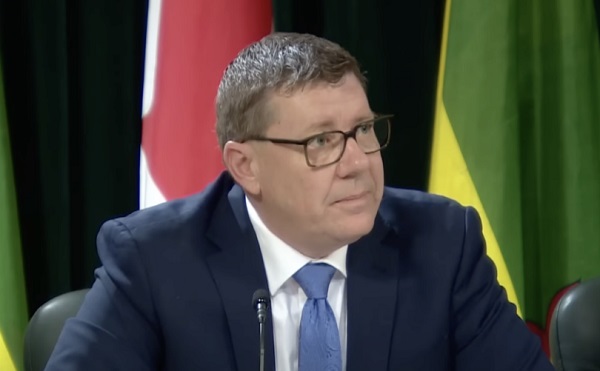
 Health1 day ago
Health1 day agoSaskatchewan woman approved for euthanasia urged to seek medical help in Canada rather than US
-
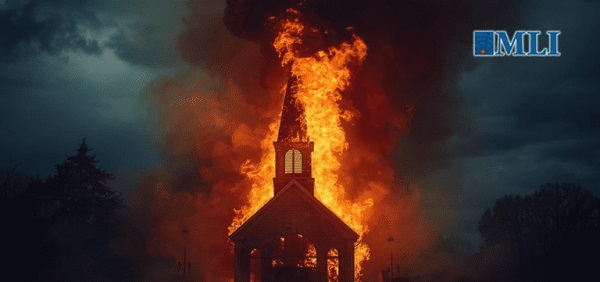
 Indigenous1 day ago
Indigenous1 day agoResidential school burials controversy continues to fuel wave of church arsons, new data suggests
-

 International1 day ago
International1 day agoFBI didn’t think it had cause to raid Trump but DOJ did it anyway
-
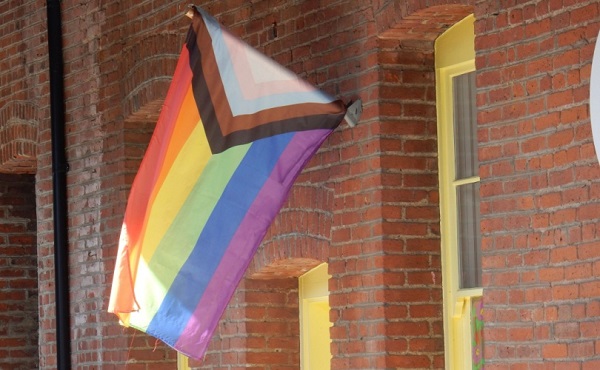
 Health2 days ago
Health2 days agoCanadian gov’t considers sharing census data on gender-confused children
-
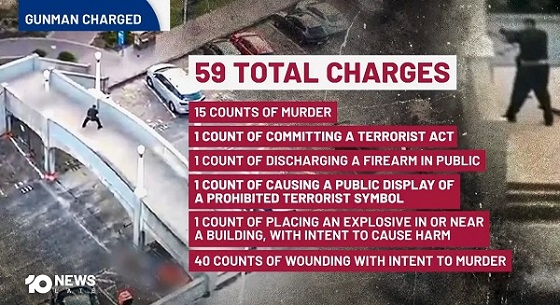
 Crime19 hours ago
Crime19 hours agoThe Uncomfortable Demographics of Islamist Bloodshed—and Why “Islamophobia” Deflection Increases the Threat
-

 Energy23 hours ago
Energy23 hours agoLiberals Twisted Themselves Into Pretzels Over Their Own Pipeline MOU
-
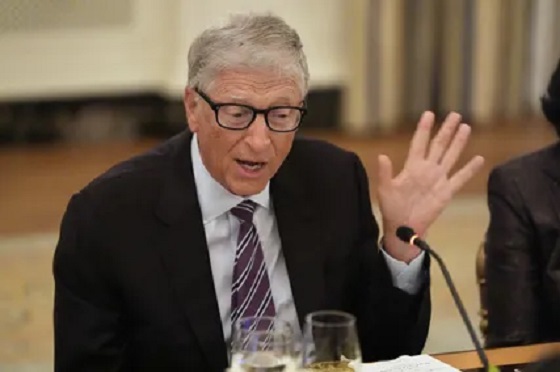
 Business2 days ago
Business2 days agoCOP30 finally admits what resource workers already knew: prosperity and lower emissions must go hand in hand









